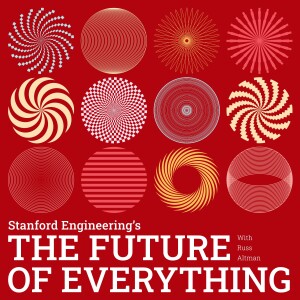
Srabanti Chowdhury: New forms of semiconductors are key to the future
 2021-07-19
2021-07-19
Electronics are everywhere these days, so much so that often we don't even register that we are using them. The use of electronics will only grow over time as engineers solve societal challenges through increased connectivity, faster computation, new high-tech gadgets, and energy sustainability. Against that backdrop, electrical engineers like Stanford’s Srabanti Chowdhury have been searching for new semiconductors that can expand the application space beyond the ubiquitous silicon. Among the options she’s exploring is an old familiar friend—diamond—and a few new ones, too, like gallium nitride.
The diamonds Chowdhury works with are a far cry from the sparkly gems a jeweler might prize. These diamonds are “doped” with other elements to achieve optimal electrical performance. Meanwhile, gallium nitride has shown promise in LEDs and lasers, as well as in cutting-edge radar systems—among other applications.
While these new semiconductors have raised hopes of scaling new heights where even silicon cannot reach, much work remains if they are ever to move from lab bench to laptops and myriad other electronic devices. The payoff, however, will be smaller, faster, more powerful, more energy efficient, and more versatile electronics, as Chowdhury tells listeners to this episode of Stanford Engineering’s The Future of Everything podcast with host Russ Altman. Listen and subscribe here.
Connect With Us:
Episode Transcripts >>> The Future of Everything Website
Connect with Russ >>> Threads or Twitter/X
Connect with School of Engineering >>> Twitter/X
More Episodes
 2024-11-01
2024-11-01
 2024-10-25
2024-10-25
 2024-10-18
2024-10-18
 2024-10-04
2024-10-04
 2024-09-27
2024-09-27
 2024-09-20
2024-09-20
 2024-09-13
2024-09-13
 2024-09-06
2024-09-06
 2024-08-30
2024-08-30
 2024-08-23
2024-08-23
 2024-08-16
2024-08-16
 2024-08-02
2024-08-02
 2024-07-26
2024-07-26
 2024-07-19
2024-07-19
 2024-07-12
2024-07-12
 2024-07-05
2024-07-05
 2024-06-28
2024-06-28
 2024-06-21
2024-06-21
Create your
podcast in
minutes
- Full-featured podcast site
- Unlimited storage and bandwidth
- Comprehensive podcast stats
- Distribute to Apple Podcasts, Spotify, and more
- Make money with your podcast
It is Free
- Privacy Policy
- Cookie Policy
- Terms of Use
- Consent Preferences
- Copyright © 2015-2024 Podbean.com




